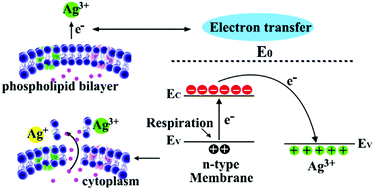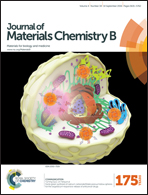Electron transfer driven highly valent silver for chronic wound treatment
Abstract
Although silver is widely added to various chronic wounds to kill higher concentrations (107–108 CFU mL−1) of bacteria, overdose of silver remains a major cause of diverse side effects, such as cytotoxicity and tissue and organ damage. Here we showed that reducing the dose level of silver, additionally conferring electron transfer potential, could simultaneously achieve good biocompatibility and strong bactericidal ability without introducing extra chemical residuals for chronic wound treatment. A systematic investigation demonstrated that 1 ppm trivalent silver ions performed rapid (5 min) and effective antibacterial activities against pathogens while not significantly affecting cell viability which were equivalent to 20 ppm monovalent silver ions with cytotoxicity, and accelerated the healing process and improved the tissue quality of burn wounds. The killing effect is independent of material and is mainly controlled by the electron transfer potentials of trivalent silver ions, which disrupts the electron transport of bacteria membrane respiration and leads to the death of bacteria. Together, such trivalent silver opens up new possibilities for dispelling the concern of silver usage in biosafety and provides an avenue for designing antibiotics or other biomedical applications.

- This article is part of the themed collection: 2016 Journal of Materials Chemistry B Hot Papers

 Please wait while we load your content...
Please wait while we load your content...